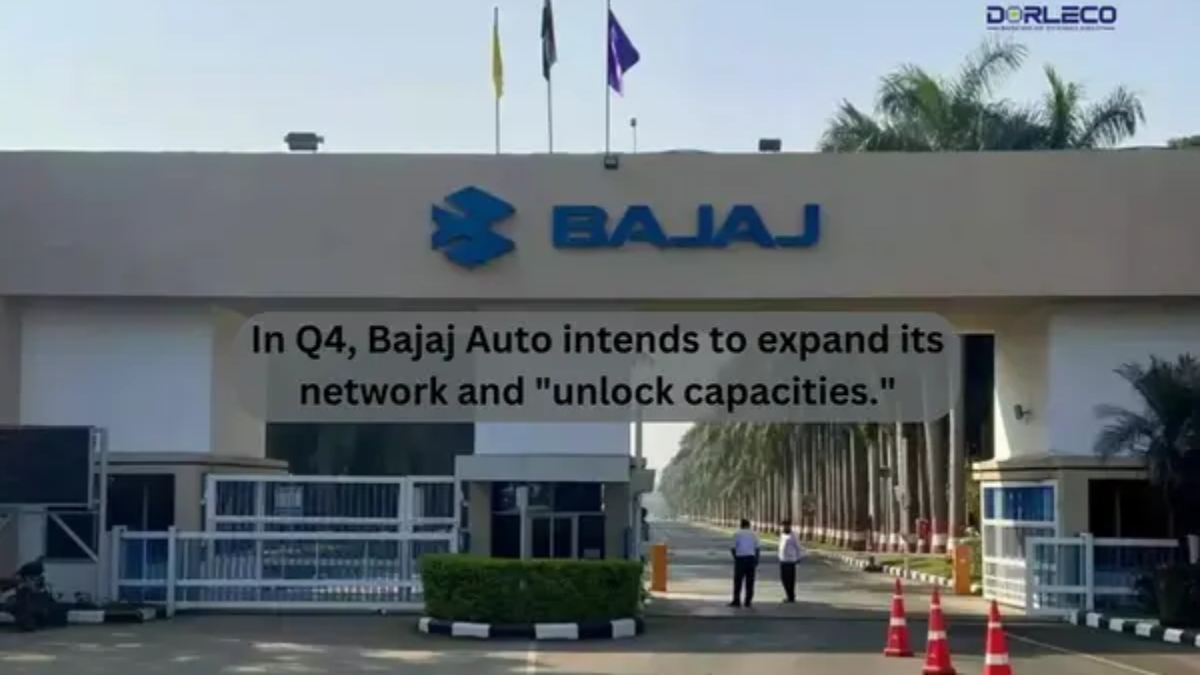Currently, expanding the networks and unlocking production capacity are our main priorities. We have a new facility for electric three-wheelers, which will be operational by the end of this quarter. During the company’s post-earnings call, Bajaj Auto’s Chief Financial Officer (CFO), Dinesh Thapar, informed ETAuto that the company will be spending over INR 400 crore for this until early in the upcoming fiscal year.
New Delhi: Moving into an expansion phase, Bajaj Auto, a leading manufacturer of two and three-wheelers, plans to grow its three main businesses in the current January–March quarter: electric three-wheelers, Chetak electric scooters, and Triumph motorcycles.
Currently, expanding the networks and unlocking production capacity are our main priorities. We have a new facility for electric three-wheelers that will be put into service by the end of this quarter. During a post-earnings call on Wednesday, Bajaj Auto’s Chief Financial Officer (CFO), Dinesh Thapar, informed ETAuto that the company will be investing almost INR 400 crore until the early part of the next fiscal year.
Last year, the Pune-based automaker—which leads the market for traditional ICE three-wheelers—introduced its electric three-wheelers in a few locations. The company is now implementing them in 23 cities, with plans to roll them out to 70–80 locations “over the next few months.”
The Chetak electric scooter company is the target of the second expansion strategy.
“We want to grow the volumes to 15,000 units per month in the immediate term, and then look at upwards of 20,000 units thereafter, along with the network expansion,” Thapar stated.
Approximately 15,000 units were sold by Bajaj in the October–December 2023 quarter, comprising 8000 units sold domestically and roughly 7000 units exported.
The company said in its Annual Report for 2022–2023 that domestic sales of its electric scooter, the Chetak, were 8,187 units in FY22 and 36,260 units in FY23.
According to Thapar, the company’s investments from the previous 15 to 18 months are beginning to pay off. “We feel much more confident about our ability to scale this up even further and much better about the business today.”
Triumph, a British motorcycle manufacturer, and Bajaj established a global cooperation in 2017. The two businesses introduced the jointly built Triumph Speed 400 and Scrambler 400 X motorcycles in India in July of last year. The 15 Triumph motorcycle dealerships that are now open will be managed by Bajaj Auto as part of the collaboration, but they will continue to be solely for the brand and run by Triumph’s international standards.
Triumph motorcycles are manufactured at the new Bajaj Auto factory in Chakan, which was initially able to produce 5,000 of these bikes each month. It was later raised to eight thousand units. By April/May 2024, Bajaj wants to achieve monthly volumes of 10,000 units. The company started shipping these models in Q3.
But we are very aware that there is a big event on FAME and what happens at the end of March will determine at least the two-wheeler industry’s near-term course.”For its Bajaj Motors, KTM, Chetak Electric, and Bajaj three-wheeler product lines, Bajaj Auto currently runs four different dealership networks.
Performance from October to December 2023.
Bajaj Auto announced on Wednesday that its consolidated Profit after Tax (PAT) for the October–December quarter increased by 38% to INR 2,032.62 crore. In the same time the previous year, the company reported a combined PAT of INR 1,472.7 crore.
In Q3 FY24, the combined total revenue from operations was INR 12,165.33 crore, compared to Q3 FY23’s INR 9,318.54 crore.
In addition to being a record quarter, Thapar claims that Q3 is noteworthy because it marks the third consecutive quarter in which both the top and bottom lines have reached new highs. It is an indication of the business’s momentum and the operating model’s durability, despite the ongoing difficulties we face in a significant portion of our export markets.
Compared to the same period last year, when sales of two-wheelers were 8,51,242 units, they increased by 22% to 10,40,193 units in the quarter under review.
Sales of commercial vehicles increased by 22% to 1,60,804 from 1,32,229 in the same quarter of the previous fiscal year.

